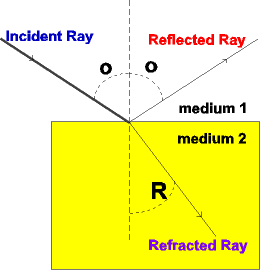 The lens system
classification divides the microscope into simple or compound
microscopes. A simple microscope consists of a single lens or several
lenses grouped in one unit and is only used to enlarge an object (magnification). The
lens system ranges from double convex to two plano-convex lenses.
Examples of simple microscopes include reading glasses, jewelry
eyepieces, and pocket magnifiers.
The lens system
classification divides the microscope into simple or compound
microscopes. A simple microscope consists of a single lens or several
lenses grouped in one unit and is only used to enlarge an object (magnification). The
lens system ranges from double convex to two plano-convex lenses.
Examples of simple microscopes include reading glasses, jewelry
eyepieces, and pocket magnifiers.
A compound microscope includes an eyepiece and one or more
objectives
where the eyepiece enlarges the resolved image created by the objective
(resolution)
There are a series of different types of lens within the optic tube.
Resolved images actually enlarge and add detail to the observed object.
There are two types
of compound microscopes that use light to observe transparent (or
translucent) and opaque objects. An opaque object requires light that
reflects from the object through the lenses in the optic tube. This type
of microscope is referred to as a "dissecting" or
reflecting" microscope.
A microscope that uses the light to
transmit through a transparent object up the objective and eyepieces uses
the principle of refraction (diagram to the left). Light from a
condenser goes through an object that is mounted in a medium. The object
and the medium must provide contrast (called index of refraction) so
that you can distinguish the medium from the object. These are usually
referred to as transmitting light microscopes.
PROCEDURE:
Read The Naked Eye by
J.R. Blueford to familiarize students with the different parts
of the microscope. Although it is easy reading it will
review basic principles of the microscope.
Go over the
components of a transmitting light microscope using the worksheet. The
components that should be pointed out are the eyepiece, objective, optic
tube, adjustment mechanism, base, stage, condenser, and arm. Have the
students compare the transmitting light microscope with the Swift GH.
Students should answer the questions on the worksheet. Use the Swift GH
to point out the reflecting microscopes do not have condensers. Refer to
the figure of the Swift GH below.
adjustment mechanisms
- an apparatus that moves the optic tube up and down to focus on the
specimen
arm - portion of microscope that connects the body to the base
base - a stable bottom for the microscope to stand upright
condenser - a lens or combination of lenses that gathers and
concentrates light in a specified direction, under the stage
eyepiece - lenses at the viewing end of a microscope or
telescope
objective - lens at the end of a microscope nearest the
object
optic tube - a long cylindrical tube that moves up and down
to focus on a specimen
stage - a platform on top of the base of the microscope on
which specimen are placed